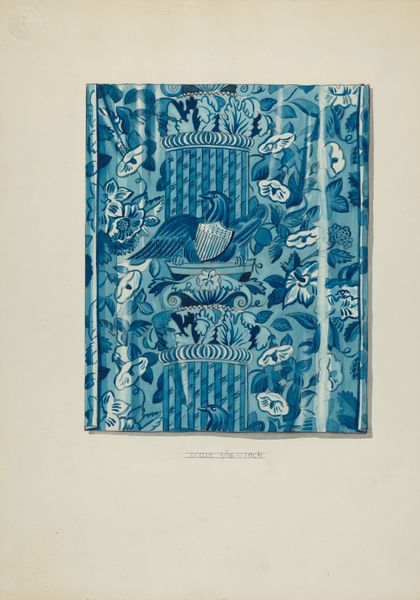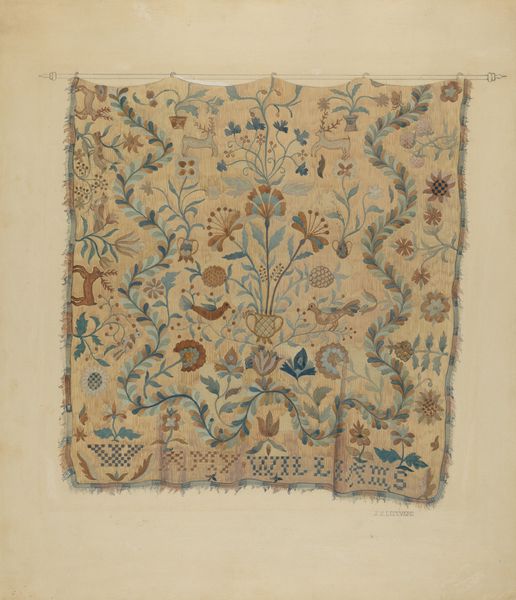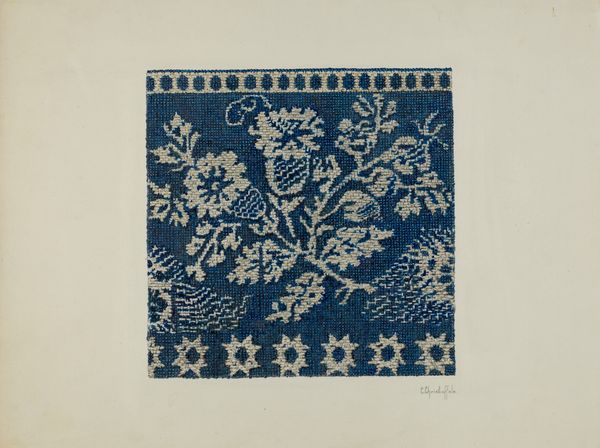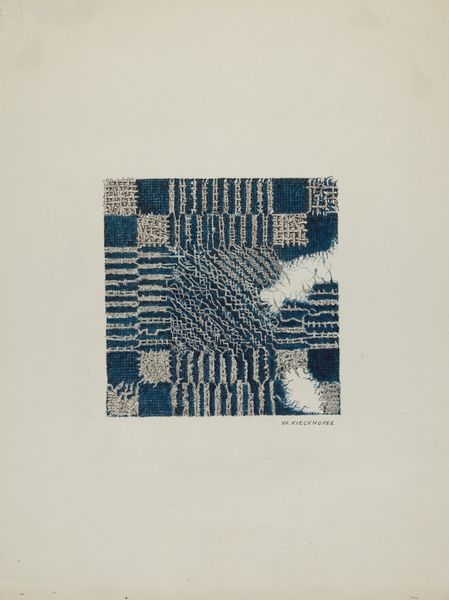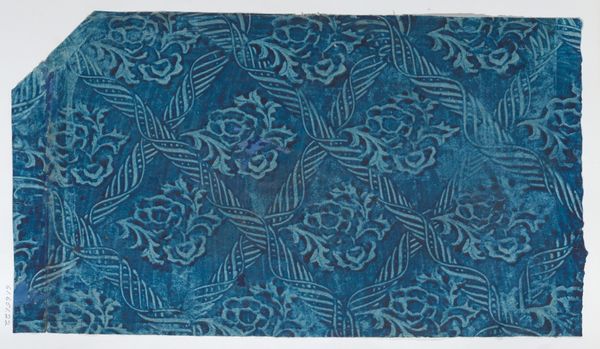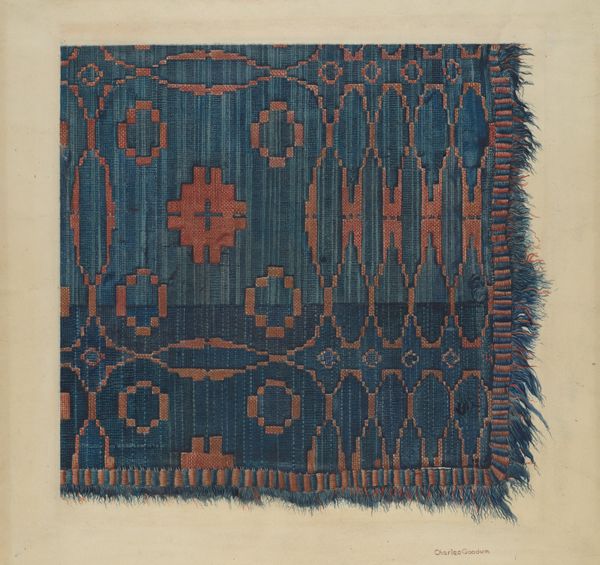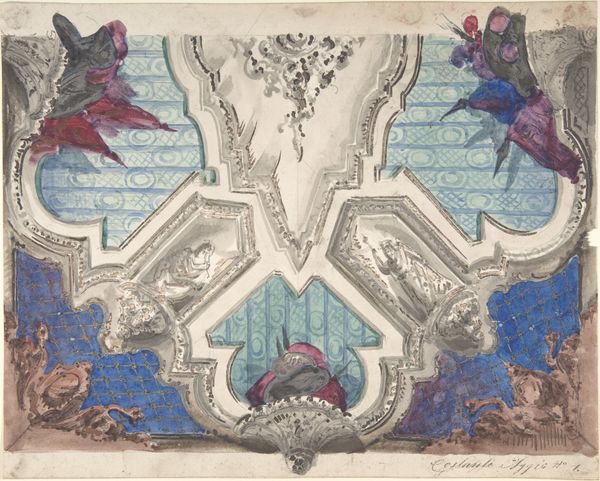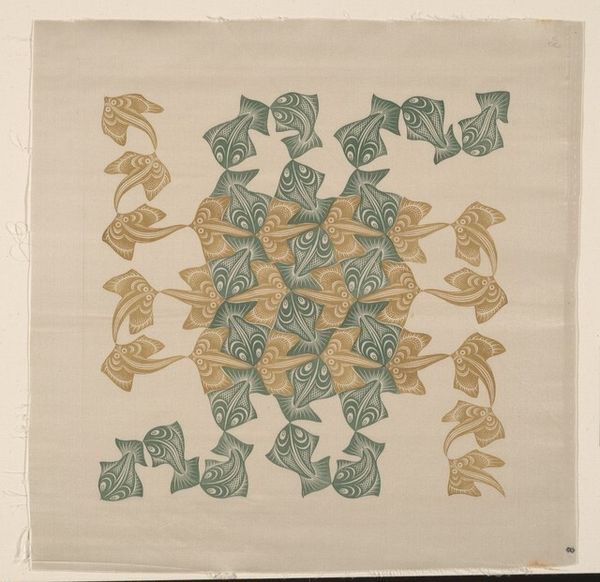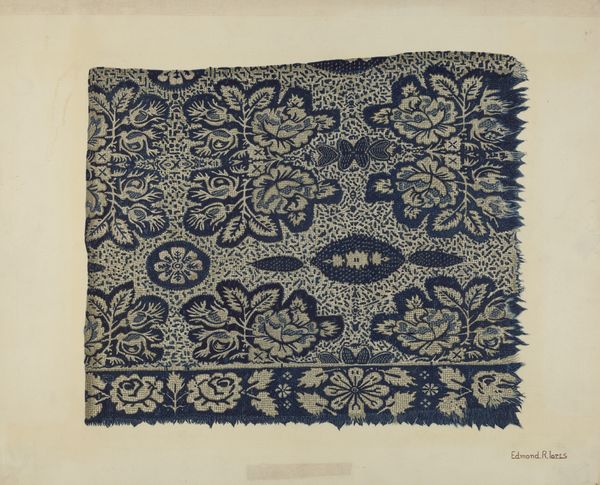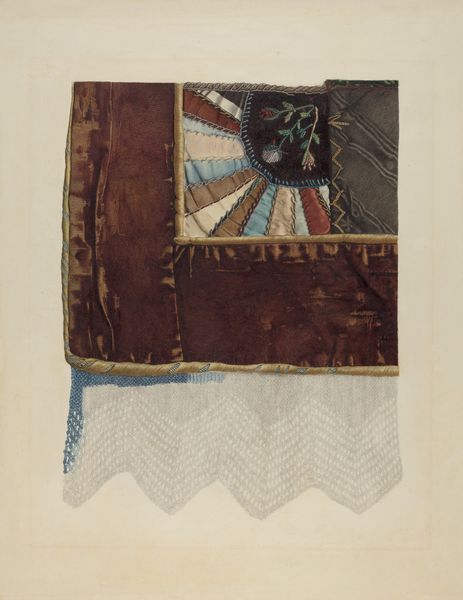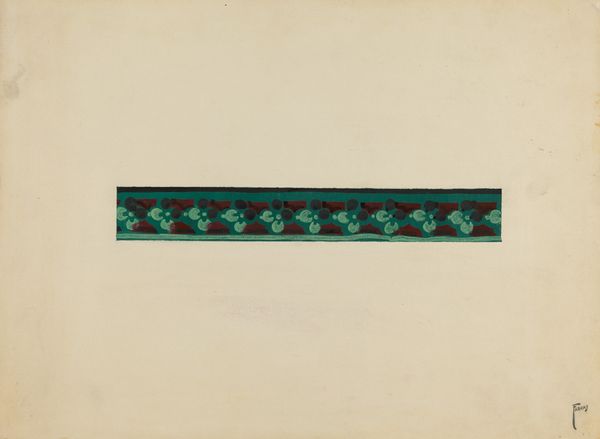
drawing, print, textile, paper, watercolor
#
drawing
#
water colours
# print
#
textile
#
paper
#
watercolor
#
coloured pencil
#
geometric
#
orientalism
#
watercolour illustration
#
decorative-art
Dimensions: overall: 35.2 x 40.5 cm (13 7/8 x 15 15/16 in.) Original IAD Object: 16" high; 23 1/2" wide
Copyright: National Gallery of Art: CC0 1.0
Curator: This work, titled "Printed Textile," was created by Sidney Liswood around 1938. It combines drawing and print techniques, incorporating watercolor and colored pencil on what appears to be paper. The image suggests a repeat pattern, maybe a design for a larger fabric piece. Editor: My immediate impression is tranquility. The limited blue palette, the repeating flowers, and the presence of the birds create a calm, almost meditative visual field. Curator: The execution is particularly interesting to me. Considering it was intended as a printed textile, the integration of hand-drawn elements elevates it beyond mere industrial design. You can really see Liswood's labor and artistic decisions in the variations in tone. Editor: Definitely, and this is not a simple repeat. The image places the symbolism front and center. Birds, especially doves or pigeons, often represent peace, hope, or freedom, all wrapped into decorative art during a politically fraught moment in history. What statements were the patterns and adornments conveying about societal dreams and desires? Curator: Perhaps that blending speaks to the period's changing perception of craft and its role in mass production. It reminds us of a fascinating tension between the artisanal and the industrial, where artists aimed to bring handmade sensibilities into functional objects. Editor: Exactly. And, by blending what is perceived to be low art and high art, what gendered messages are conveyed when “crafting” blends into a commercial and industrialized business? I see orientalist influences too, like colonial perceptions are appropriated by gendered labor of pattern creation and fabrication of adornments. Curator: You know, analyzing the paper substrate and pigments used could reveal more about its production context. I wonder what types of dyes or printing methods were common in the textile industry around 1938 and what kind of technology was employed at the time, also, the kind of workforce employed to develop the craft. Editor: Fascinating. The combination of these two worlds makes the design both aesthetically pleasing and deeply thoughtful, making the role and value of artistry into industrial techniques a constant cultural question. Curator: Indeed, this little piece of paper becomes a potent conversation starter about process and consumption. Editor: Ultimately, by unpacking artmaking methods, a space opens up to talk about cultural impacts and potential politics that are weaved and weighted in our contemporary gaze.
Comments
No comments
Be the first to comment and join the conversation on the ultimate creative platform.
